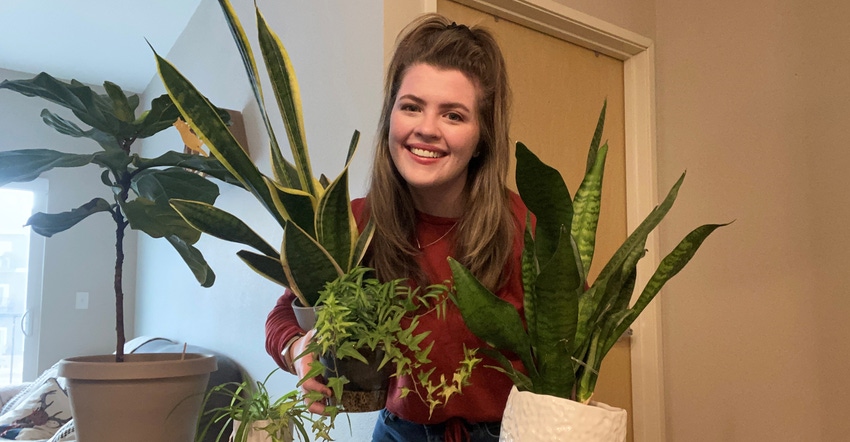December 22, 2021

Am I the best person to advise on houseplant care and maintenance? Absolutely not. Am I, as a person with a black thumb, someone who can suggest extra-hardy houseplants that have a chance to survive? Absolutely.
My whole life I’ve steered clear of most plants, and childhood memories of plants I received often ended with me crying to my mom about why they died so quickly. I’ll give you a hint: I was the problem. Fast-forward just a few years, and I’ve found some great plants that can withstand me forgetting to water them or being left too close to a cold window.
My hard-to-kill plant suggestions include:
Snake plants. My oldest plant is a snake plant I received from my grandma three years ago. I’ve added three different varieties to my collection, and these are thriving just as well. Snake plants are actually known as Sansevieria, and have over 70 varieties. These plants are drought-tolerant (can survive being neglected for a few weeks) and can handle low-light environments like offices, hallway or basements.
Actual plant experts advise keeping these plants in in-direct lighting and taking care not to overwater them. With good care, these plants can grow up to 3 feet tall.
Spider plants. Some of the plants I’m most proud of would be my assortment of spider plants. All four of them originated as cuttings from a friend and have grown into full-size plants. While I’ve managed to kill a few of the cuttings that I tried to transplant, the full-size plants are still going strong. One of the tips I received from an Extension horticulturalist was to use distilled water to avoid brown tips appearing on the leaves.
Spider plants, or Chlorophytum comosum, are another plant that likes to be on the dryer side and in bright, in-direct light. They are susceptible to root rot, so be sure to provide them with well-drained soil. They earned their name due to the “spiderettes” that grow off of the main plant, which can be trimmed off and propagated into their own pot.
Spearpoint ivy. One of my newest additions is a small spearpoint ivy, or Hedera helix. I wanted a plant that could hang with cascading leaves, and this caught my eye at one of many nursery trips. Not knowing anything about this plant upon getting it, I wanted to set this one up for success from the start so I did some research.
Ivies like moderate soil moisture and thrive in bright light. Without this bright light, your plant can become leggy and even more prone to pests. Knowing this, my ivy has the shelf spot closet to my south-facing window, and it has been doing great because of it.
Ivy plants should be fertilized on a regular schedule of once a month in the spring, summer and fall. Numerous varieties make this plant visually pleasing in a collection.
While even my lack of horticultural skill has kept these plants alive, I still can’t help but feel bad for all the plants that were mistakenly killed in the past — numerous aloe vera, succulents, cacti, all the spider plants I failed to propagate and my poor lemon button ferns that didn’t make it. After some research, I learned this plants should be easy to care for, too.
My latest plant to join the collection is a fiddle leaf fig, which can be difficult to keep healthy, so fingers crossed this one can survive.
Even if you think you could kill a plastic plant, try bringing some green life into your home this winter with one of these options.
You May Also Like




